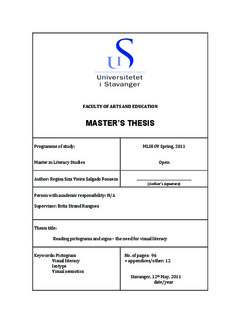Reading pictograms and signs - the need for visual literacy
Master thesis
Permanent lenke
http://hdl.handle.net/11250/185396Utgivelsesdato
2011Metadata
Vis full innførselSamlinger
- Student papers (HF-IKS) [909]
Sammendrag
Reading pictograms and signs – the need for visual literacy is a study of the impact pictorial signs have on the social and physical environment, and, by extension, on media and visual culture. From the many possibilities that the field of visual representation has to offer, the pictogram – an iconic sign that represents complex facts without resorting to words – is singled out for its distinctive characteristics. Indeed, the pictogram is a unique type of sign for being omnipresent, claiming universal comprehensibility and for declaring absolute neutrality in relation to subjects like religion, politics and gender issues. In order to demonstrate a pictorial sign’s capacity to communicate messages that are accepted and observed in any given community, this thesis provides a number of examples from traffic signs to other signs of public information, and gives special emphasis to the ubiquitous stick figure, whose design has more or less crystallized since the 1970s, and has now become paradigmatic.
The study traces the evolution of pictorial signs from the earliest cave paintings to the 21st century computer icons, that with simple algorithms can even be animated. Each reference to pictorial signs is contextualized, for a clearer perception of their weight and relevance both in the panoramas of visual representation and of social phenomena.
Parallel to the historical continuity in sign-making that it demonstrates, the study investigates the relationship between visual signs and universal languages. Conscientiously, it presents an account of defining projects of artificial languages, such as that by John Wilkins, Descartes and Leibniz in the 17th century, before introducing the picture language conceived by Otto Neurath, called Isotype, which is viewed as a breakthrough in pictogram design and use. Other examples of contemporary picture languages are also provided, namely with the cases of PCS, Icon-language and Elephant’s Memory.
A purpose that suffuses the whole study is that of advocating the need for visual literacy, as it is understood as a skill that allows us to appreciate and ascertain the use commonly given to pictorial signs, either from a production or reception perspective. In today’s world, meanings circulate visually, and not just verbally. The necessity of a critical look into the interdisciplinary and still emergent field of visual culture is argued and endorsed.
Beskrivelse
Master's thesis in Literacy studies
